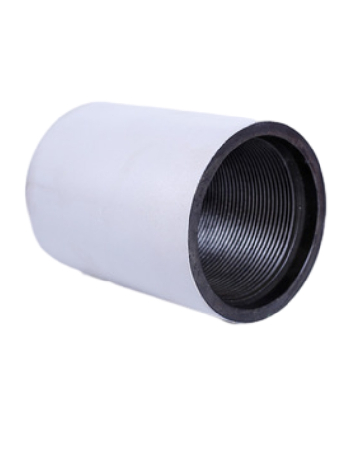- Afrikaans
- Albanian
- Amharic
- Arabic
- Armenian
- Azerbaijani
- Basque
- Belarusian
- Bengali
- Bosnian
- Bulgarian
- Catalan
- Cebuano
- Corsican
- Croatian
- Czech
- Danish
- Dutch
- English
- Esperanto
- Estonian
- Finnish
- French
- Frisian
- Galician
- Georgian
- German
- Greek
- Gujarati
- Haitian Creole
- hausa
- hawaiian
- Hebrew
- Hindi
- Miao
- Hungarian
- Icelandic
- igbo
- Indonesian
- irish
- Italian
- Japanese
- Javanese
- Kannada
- kazakh
- Khmer
- Rwandese
- Korean
- Kurdish
- Kyrgyz
- Lao
- Latin
- Latvian
- Lithuanian
- Luxembourgish
- Macedonian
- Malgashi
- Malay
- Malayalam
- Maltese
- Maori
- Marathi
- Mongolian
- Myanmar
- Nepali
- Norwegian
- Norwegian
- Occitan
- Pashto
- Persian
- Polish
- Portuguese
- Punjabi
- Romanian
- Russian
- Samoan
- Scottish Gaelic
- Serbian
- Sesotho
- Shona
- Sindhi
- Sinhala
- Slovak
- Slovenian
- Somali
- Spanish
- Sundanese
- Swahili
- Swedish
- Tagalog
- Tajik
- Tamil
- Tatar
- Telugu
- Thai
- Turkish
- Turkmen
- Ukrainian
- Urdu
- Uighur
- Uzbek
- Vietnamese
- Welsh
- Bantu
- Yiddish
- Yoruba
- Zulu
Casing Pup Joint Specifications and Applications in Oil and Gas Industry
Understanding Casing Pup Joints An Essential Component in Oil and Gas Operations
In the oil and gas industry, the efficient and safe extraction of resources heavily relies on various components used in wells. One of the critical components that play a pivotal role in the construction and maintenance of wells is the pup joint. Although often overlooked, casing pup joints are essential elements that ensure the integrity of the drilling process.
What is a Casing Pup Joint?
A casing pup joint is a short length of pipe that is used in conjunction with other casing components. Casing itself is a series of pipes that are installed in a wellbore to provide support, prevent collapse, and maintain the integrity of the well. These pipes are typically made of steel and come in various lengths and diameters. However, there are instances when the standard casing lengths do not fit perfectly, resulting in the need for additional, shorter lengths—this is where pup joints come into play.
Pup joints can vary in length but are generally much shorter than standard casing. They can be custom manufactured to meet specific requirements or can come in predefined lengths. Despite their short size, pup joints play a significant role in bridging the gap between standard casing lengths or connecting various components within the casing string.
Functions of Casing Pup Joints
1. Length Adjustment One of the primary functions of a casing pup joint is to facilitate precise length adjustments in the casing installation. When the rig crew encounters a situation where additional length is required to reach a specific depth or to connect to another casing section, a pup joint provides the necessary solution.
casing pup joint

2. Pressure and Environmental Resistance Like standard casing, pup joints are designed to withstand high pressure and harsh environmental conditions. They are manufactured to the same quality standards as casing, ensuring that they can handle the stresses encountered during drilling and production.
3. Ease of Handling and Installation The relatively short length of pup joints makes them easier to handle and install compared to longer sections of casing. This ease of handling can significantly reduce the time and effort required during the casing installation process, contributing to overall operational efficiency.
4. Modularity Pup joints enhance the modularity of the casing design. With various lengths and specifications available, they allow engineers and rig crews to customize the casing string according to specific geological conditions or well requirements.
Importance in Well Integrity
The integrity of a well is paramount in oil and gas operations. Using casing pup joints helps maintain this integrity by ensuring that the casing string is properly aligned and securely connected. The correct installation of casing components, including pup joints, minimizes the risk of leaks or blowouts, which could have catastrophic consequences for both human safety and the environment.
Conclusion
Casing pup joints may be small components in the grand scheme of oil and gas drilling operations, but their importance cannot be underestimated. They provide essential flexibility, ensure well integrity, and facilitate the efficient handling and installation of casing. Understanding the role of pup joints is vital for engineers, drilling crews, and industry stakeholders committed to safe and effective resource extraction. As the industry continues to evolve and face new challenges, the significance of well-constructed and maintained casing systems—including the effective use of casing pup joints—will remain a cornerstone of successful oil and gas operations.
-
Tubing Pup Joints: Essential Components for Oil and Gas OperationsNewsJul.10,2025
-
Pup Joints: Essential Components for Reliable Drilling OperationsNewsJul.10,2025
-
Pipe Couplings: Connecting Your World EfficientlyNewsJul.10,2025
-
Mastering Oilfield Operations with Quality Tubing and CasingNewsJul.10,2025
-
High-Quality Casing Couplings for Every NeedNewsJul.10,2025
-
Boost Your Drilling Efficiency with Premium Crossover Tools & Seating NipplesNewsJul.10,2025







